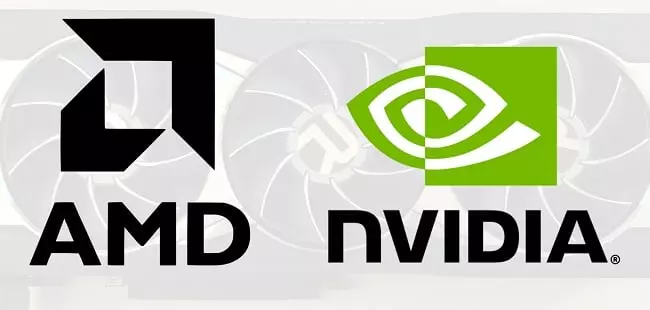AMD vs Nvidia: Which company makes the best GPU?
The battle between Nvidia and AMD to determine the best GPU brand shows no signs of stopping. And the following reviews will give conclusions...

The debate between Nvidia and AMD graphics cards has been a longstanding one in the gaming community. With both brands offering impressive features and performance, it can be challenging to decide which one to choose. In this article, we’ll delve into the details of each brand’s offerings and compare their performance, features, and pricing to help you make an informed decision.
Performance
When it comes to raw performance, both Nvidia and AMD offer spectacular graphics cards. However, Nvidia takes the lead in 4K and ray-traced gaming, while AMD excels in 1080p and 1440p gaming. The Nvidia GeForce RTX 4090, for instance, offers unparalleled performance, but at a hefty price tag. The AMD Radeon RX 7900 XTX, on the other hand, offers excellent 4K gaming performance at a lower price point.
Features
Nvidia and AMD take different approaches to software features. Nvidia’s proprietary features, such as DLSS (Deep Learning Super Sampling) and ray tracing, are exclusive to their graphics cards. AMD, on the other hand, offers more consumer-friendly features like FSR (FidelityFX Super Resolution) that can be used on both AMD and Nvidia graphics cards.
Nvidia’s features are more polished and refined, but AMD is catching up with its upcoming FSR 3 and second-gen Ray Accelerators. AMD’s focus on gaming-centric features makes it a more appealing choice for gamers, while Nvidia’s features cater more to creative professionals and those who require advanced AI capabilities.
Pricing
AMD has traditionally been known for its affordability, and this remains true in the current market. AMD graphics cards offer excellent performance at a lower price point than their Nvidia counterparts. The AMD Radeon RX 7900 XTX, for instance, is priced at $999, while the Nvidia GeForce RTX 4090 costs a whopping $1,699.
Mid-range and budget options from AMD also offer better value for money. The AMD Radeon RX 7800 XT, priced at $499, offers better performance than the Nvidia GeForce RTX 4060 Ti, which costs $599.

Conclusion
The choice between Nvidia and AMD graphics cards ultimately depends on your specific needs and budget. If you’re a gamer who prioritizes 4K and ray-traced gaming, Nvidia is the better choice. However, if you’re on a budget or prefer 1080p and 1440p gaming, AMD offers better value for money.
AMD’s focus on gaming-centric features and its more affordable pricing make it an attractive option for gamers. Nvidia’s advanced AI capabilities and polished features, on the other hand, cater more to creative professionals.
Regardless of which brand you choose, one thing is certain – both Nvidia and AMD offer exceptional graphics cards that will elevate your gaming experience.
[6/13, 11:49 PM] Meta AI: Nvidia vs AMD Gaming: Which Graphics Card Reigns Supreme?
The debate between Nvidia and AMD graphics cards has been a longstanding one in the gaming community. With both brands offering impressive features and performance, it can be challenging to decide which one to choose. In this article, we’ll delve into the details of each brand’s offerings and compare their performance, features, and pricing to help you make an informed decision.
Performance
When it comes to raw performance, both Nvidia and AMD offer spectacular graphics cards. However, Nvidia takes the lead in 4K and ray-traced gaming, while AMD excels in 1080p and 1440p gaming. The Nvidia GeForce RTX 4090, for instance, offers unparalleled performance, but at a hefty price tag. The AMD Radeon RX 7900 XTX, on the other hand, offers excellent 4K gaming performance at a lower price point.
Features
Nvidia and AMD take different approaches to software features. Nvidia’s proprietary features, such as DLSS (Deep Learning Super Sampling) and ray tracing, are exclusive to their graphics cards. AMD, on the other hand, offers more consumer-friendly features like FSR (FidelityFX Super Resolution) that can be used on both AMD and Nvidia graphics cards.
Nvidia’s features are more polished and refined, but AMD is catching up with its upcoming FSR 3 and second-gen Ray Accelerators. AMD’s focus on gaming-centric features makes it a more appealing choice for gamers, while Nvidia’s features cater more to creative professionals and those who require advanced AI capabilities.
Pricing
AMD has traditionally been known for its affordability, and this remains true in the current market. AMD graphics cards offer excellent performance at a lower price point than their Nvidia counterparts. The AMD Radeon RX 7900 XTX, for instance, is priced at $999, while the Nvidia GeForce RTX 4090 costs a whopping $1,699.
Mid-range and budget options from AMD also offer better value for money. The AMD Radeon RX 7800 XT, priced at $499, offers better performance than the Nvidia GeForce RTX 4060 Ti, which costs $599.
Conclusion
The choice between Nvidia and AMD graphics cards ultimately depends on your specific needs and budget. If you’re a gamer who prioritizes 4K and ray-traced gaming, Nvidia is the better choice. However, if you’re on a budget or prefer 1080p and 1440p gaming, AMD offers better value for money.
AMD’s focus on gaming-centric features and its more affordable pricing make it an attractive option for gamers. Nvidia’s advanced AI capabilities and polished features,
Website of Vietnam Union of Science and Technology Associations
License number: 169 / GP-TTĐT, dated October 31, 2017
Head of Editorial Department: VI VU
The Vietnam Union system was founded with 15 members. Currently, that number has risen to 148, including 86 national industry associations and 63 local associations. In addition, in the system of the Vietnam Union, there are more than 500 scientific and technological research units established under Decree 81 (now Decree 08); over 200 newspapers, magazines, electronic newspapers, newsletters, specialties, electronic news sites.
